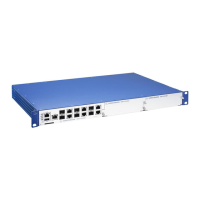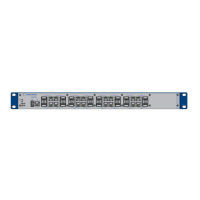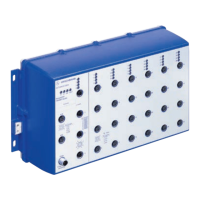Redundancy
12.3
Spanning Tree
163
UM Config GRS
Release
8.0
09/2019
When there are multiple paths with the same root path costs, the bridge further away from the
root decides which port it blocks. For this purpose, it uses the bridge identifiers of the bridge
closer to the root. The bridge blocks the port that leads to the bridge with the numerically higher
ID (a numerically higher ID is the logically worse one). When 2 bridges have the same priority,
the bridge with the numerically larger MAC address has the numerically higher ID, which is
logically the worse one.
When multiple paths with the same root path costs lead from one bridge to the same bridge, the
bridge further away from the root uses the port identifier of the other bridge as the last criterion
(see figure 33). In the process, the bridge blocks the port that leads to the port with the
numerically higher ID (a numerically higher ID is the logically worse one). When 2 ports have
the same priority, the port with the higher port number has the numerically higher ID, which is
logically the worse one.
Figure 36: Flow diagram for specifying the root path
Equal
path costs?
Determine root path
no
yes
Equal priority in
bridge identification?
Equal
port priority?
yes
Path with lowest
path costs = root path
Path with highest
port priority (numerically
lower value) = root path
Path with highest
priority (numerically
lower value) in bridge
identification = root path
no
no
Path with lowest
port number of designated
bridge = root path
Root path determined
Use the bridge with
lowest MAC address
= designated bridge
yes

